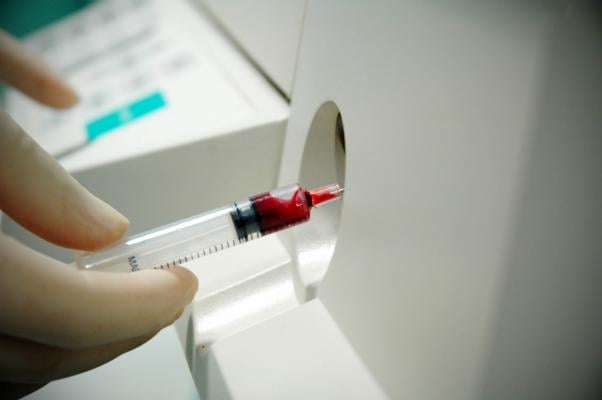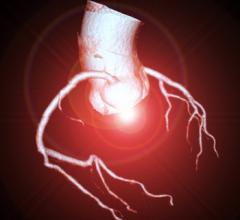
September 30, 2013 — Critical Diagnostics announced the clinical study, “Head-to-head comparison of two myocardial fibrosis biomarkers for long-term heart failure risk stratification: ST2 vs. Galectin-3,” recently published online in Journal of the American College of Cardiology (JACC) comparing the company’s cardiac biomarker ST2 to Galectin-3 (Gal-3), a biomarker from BG Medicine, found ST2 to be superior.
Study investigators followed 876 heart failure patients over a five-year period, comparing ST2 and Gal-3’s ability to predict all-cause death and cardiovascular mortality over conventional clinical assessment, using 11 standard risk factors (age, sex, NYHA functional class, estimated glomerular filtration rate, left ventricular ejection fraction, diabetes mellitus, sodium, hemoglobin, ischemic etiology of HF, ACE inhibitor or ARB drug treatment and beta-blocker treatment) plus NT-proBNP.
In a multivariate analysis, only ST2 remained independently associated with all-cause and cardiovascular mortality. The incremental predictive contribution of Gal-3 to existing clinical risk factors was, as the study authors pronounced, “trivial,” and when troponin was included, Gal-3 fell out of the model.
The same study also showed that ST2 adds considerable prognostic value even when the commonly used biomarkers for heart failure patient care, Roche Diagnostic’s NT-proBNP, as well as high-sensitive troponin are also considered.
“This study emphasizes the clinical value of the emerging biomarkers of cardiac fibrosis for risk assessment in patients with ambulatory heart failure and establishes finally and unequivocally that ST2 is superior to Gal-3 for this clinical objective,” stated James Snider, president of Critical Diagnostics. “As the study showed, every 10 ng/mL increase in ST2 increased a patient’s risk by 20 percent. For example, a patient with an ST2 level of 85 ng/ml is at a two-fold higher risk than a patient with an ST2 level at the FDA cleared threshold of 35 ng/ml. At 135 ng/mL, that patient would be at a three-fold higher risk. That’s pretty straightforward and offers physicians a simple metric to utilize ST2 in risk assessment of their patients for determination of the best course of treatment.”
“In all studied cohorts with or without additional biomarkers, including natriuretic peptides, ST2 unambiguously emerged as a cardinal HF risk stratifier…. These main findings suggest that the pathways identified by ST2 profoundly affect risk stratification in the context of chronic HF…. The incorporation of ST2 into clinical practice for the prediction of all-cause and cardiovascular mortality should be readily contemplated by the practicing clinician.”
“As the body of evidence grows for ST2, Gal-3’s limitations become more glaringly apparent,” remarked Snider. “For instance, not only is Gal-3 shown to be an inferior risk predictor, additionally, elevated Gal-3 levels tend to remain high, regardless of any change in a patient’s condition.”
The authors pointed to a recent transplant study in which serum Gal-3 levels were measured before and after a heart transplant. Gal-3 levels stayed elevated even after patients received new hearts, leading the authors to conclude that Gal-3 is a systemic biomarker rather than being specific to heart disease. By comparison, ST2 has been shown to be directly involved in cardiac fibrosis, and ST2 levels change rapidly with changes in a patient’s condition, making ST2 an excellent biomarker for assessing patient status with serial testing.
“We also know that Gal-3 levels are affected by common confounders, such as renal function, greatly compromising its clinical utility in heart failure patients,” noted Snider. “ST2 is not affected by renal function or, for that matter, many of the most common confounders such as age or body mass index. Another big differentiator is that ST2 has a single cut point. If a patient’s ST2 level is above 35 nanograms per milliliter, they are considered at risk. Gal-3, on the other hand, has multiple cut points, so decision-making can become confused and problematic.
“As if all that were not enough, the performance of a biomarker is dependent, in part, on both its analytical and biological variability in clinical use. A biomarker’s Reference Change Value (RCV) reflects both of these measurements, expressed as the change in the value needed to indicate clinically meaningful change in a patient’s condition. Biomarkers with lower RCV values require less change to be significant. This is obviously important when serially monitoring patients. In a seminal study published this year (“Biological variation of galectin-3 and soluble ST2 for chronic heart failure: Implication on interpretation of test results”) by Alan H.B. Wu, Ph.D., professor of Laboratory Medicine at UCSF and chief of the Clinical Chemistry Laboratory at San Francisco General Hospital, ST2 was shown to have an RCV less than half that for galectin-3, making it doubly powerful.”
“It’s easy to see why, given the overwhelming body of evidence from the scientific community, more and more clinicians are turning to ST2 to help assess risk and guide treatment of their heart failure patients,” says David Geliebter, CEO of Critical Diagnostics. “This study hopefully puts an end to any debate on that issue. In a fully adjusted model, Gal-3 added no value over the standard risk factors and current biomarkers. What’s more, alarmingly, in this most recent study, Gal-3 wrongly reclassified patients into a lower risk category who eventually died.
“We are happy to say that the real winners in all this are the millions of people living with heart failure,” adds Geliebter, “because it means they will have a better chance to live happier, healthier, longer lives thanks to ST2.”
For more information: www.criticaldiagnostics.com


 January 09, 2026
January 09, 2026 









